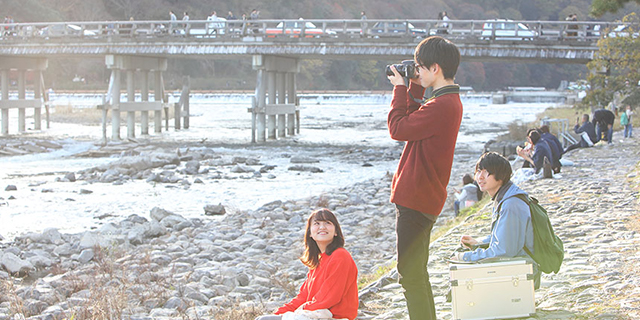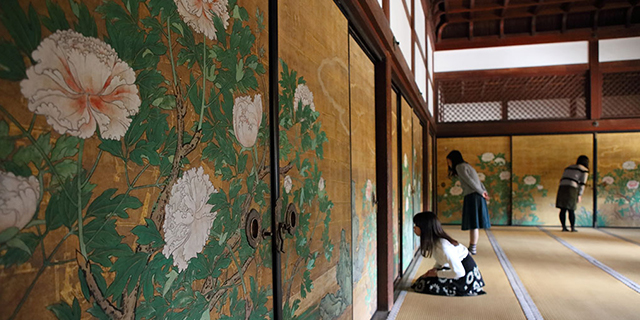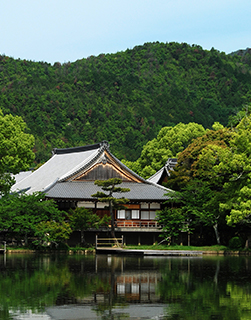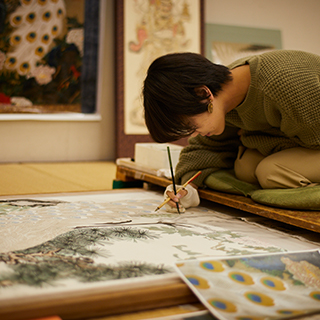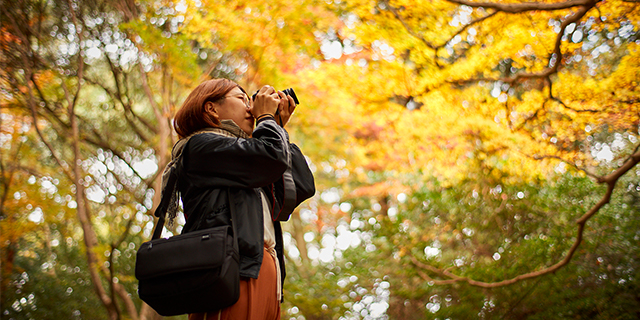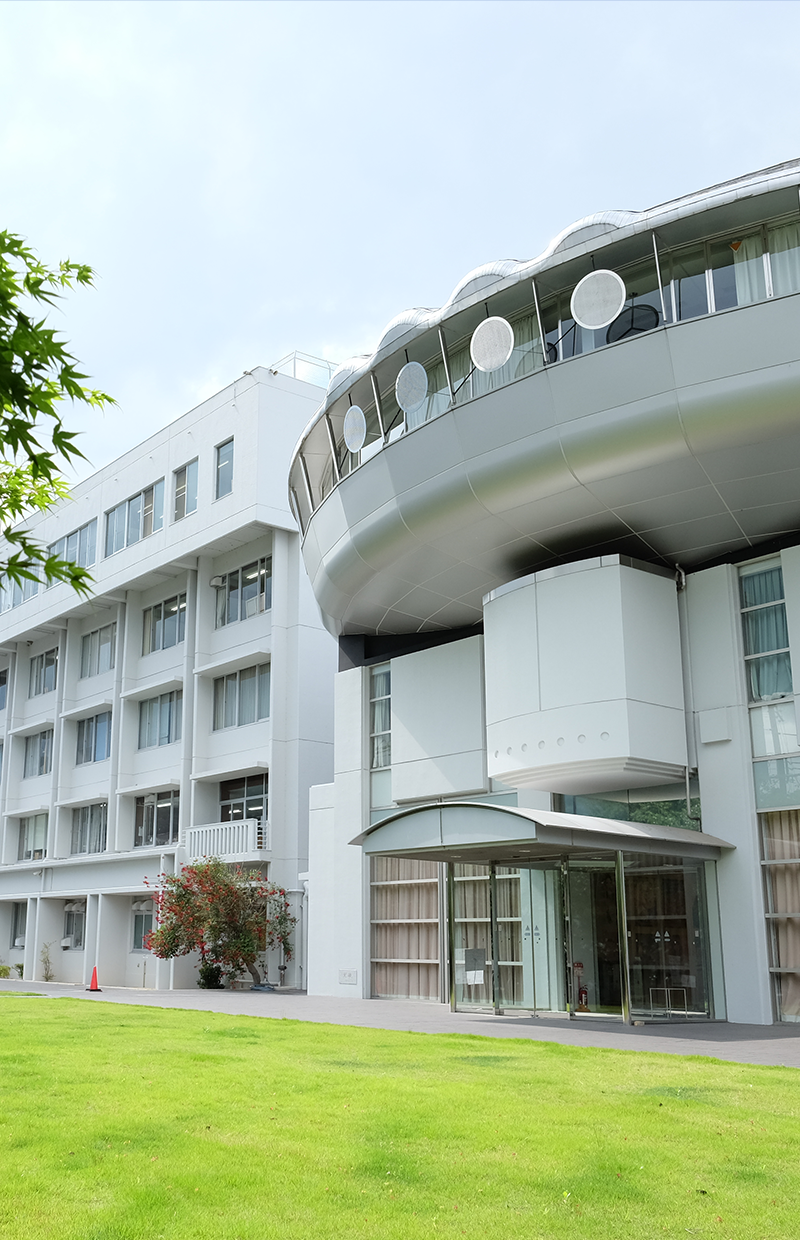
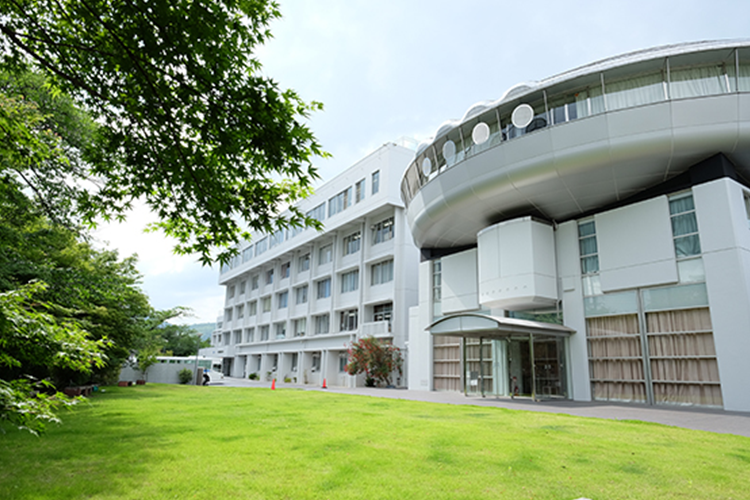
Master the power of art.
The campus of this University is located in Saga/Arashiyama, a place surrounded by historic shrines, temples, and roads. The environment plays an important role in art. It is rare to find an art university in Japan where one can feast their eyes on such beautiful and diverse changes of the four seasons. We are proud of this University’s surroundings blessed with the power of a place forged by history and nature as well as an atmosphere that supports creativity. Here, you will find friendly teachers, staff, and senior students as well as mature students and international students with their own unique individualities. Interactions with such people will also help you to become aware of the "power of art" that springs forth from within you. Experience the real "power of art" in this land of Saga and make your dreams come true in a major way.
Daikakuji Gakuen Education Charter
Founding philosophy
To learn from the thoughts and practices of Emperor Saga, Daikakuji’s founding father, and of Kobo Daishi, the founder of the sect to which Daikakuji belongs, and to utilize this spirit in modern higher education, we strive to cultivate creativity and humanity through broad education in the arts in order to foster human resources who can contribute to the realization of a rich, peaceful society.
School mission
In Kyoto, an international cultural city, we will build a solid base for art education here in Sagano, where one can experience the harmony between nature and culture, in order to contribute to the promotion of art and culture in Japan as well as foster creative and sensitive artists and cultural designers equipped with the knowledge and technology necessary to make an active social contribution, and send them out into the wider international community. To this end, Kyoto Saga University of Arts Graduate School, Kyoto Saga University of Arts, and Kyoto Saga University of Arts Junior College will be established at this School.
Goals of art education in the School
〈Fluid sensibility, rich aesthetic sense, irreplaceable self〉
Human resources that the School aims to develop
Learn in Kyoto, a city full of art
Kyoto is a city of art and culture, and the entire city is said to be a treasure trove of beauty. The Arashiyama area, one of the most popular tourist destinations in the city, has been the center of art since the Heian period. It is the best environment for cultivating aesthetic sensibilities.
A small school population makes "My atelier" possible
This University has a small-group education system with an enrollment capacity of 135 at the University and 150 at the Junior College per year. Since the number of students in the entire School is about 1,100, each student can have their own production space where they can devote themselves to their work.
The founding body of the School is Daikakuji Temple
Daikakuji is the head temple of the Shingon sect Daikakuji school, whose ancestor is Kobo Daishi Kukai. This University is an art university founded in 1971 to learn from the ideas and practices of Emperor Saga and Kobo Daishi Kukai and to apply that spirit in the modern age.
- JAPANESE PAINTING & STUDY OF OLD MASTER PAINTINGSVIEW MORE
-
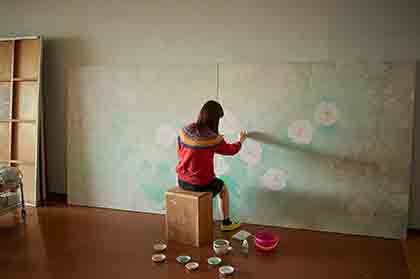
In the optimal production environment of Arashiyama, Kyoto, which is full of masterpieces and natural beauty that serve as guideposts for Japanese painting, students will learn the inherited painting materials, techniques, and painting methods, and pursue Japanese painting that explores the truth and essence of beauty. Based on an education that emphasizes sketching, which is a characteristic of the Shijo/Maruyama school, the class will be divided into "Japanese painting production studio" and "old masters painting research studio" from the second year onward, where students will acquire and hone their tools of expression, technique, and universal aesthetic sense.
CLOSE
- OIL PAINTING & GRAPHIC ARTSVIEW MORE
-
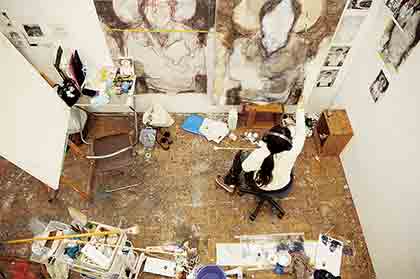
Students will learn various expression methods such as oil and watercolor depiction, printmaking, and photographic printing. Going beyond the scope of traditional paintings and prints, students will challenge contemporary art techniques such as installations, learn about the possibilities of expression, and explore deep into their own worlds. As the students delve deeper into art, they will also learn how to develop it into design work, as well as the relationship between society and art.
CLOSE
- SCULPTURE, CERAMIC & MEDIA ARTSVIEW MORE
-
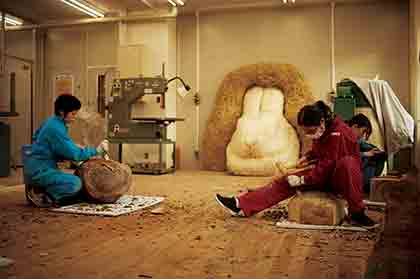
This is an area where students can learn about 3D expression, spatial expression, and ceramic art. "Three-dimensional modeling studio" explores the possibilities of a wide range of expressions, from sculptures and works using an entire space to works using images and sounds. At "Ceramics studio," students take advantage of various expression techniques from traditional to experimental, and making full use of "hands" and the "five senses," produce a variety of art from craft works such as vessels to large ceramic objects.
CLOSE
- GRAPHIC DESIGNVIEW MORE
-
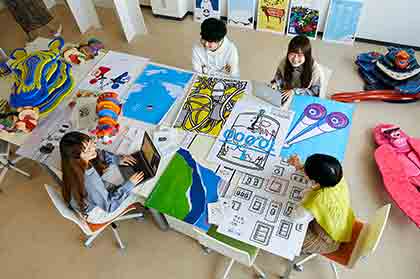
Students will learn the essence of communication design while challenging a wide range of designs, including didactic graphic designs that meet social needs such as advertisements, posters, and book designs; comprehensive product design based on plans to create brand value; and public design such as logos and signage plans of public facilities.
CLOSE
- ILLUSTRATIONVIEW MORE
-
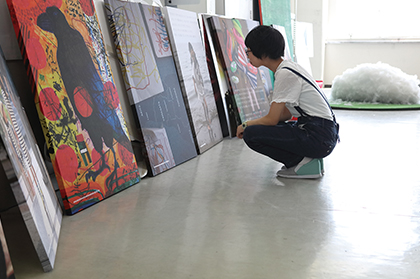
Illustrations express the world inside people’s hearts that cannot be expressed in words. Complex things are made clearer, difficult things easier to understand, formal things more fun, and interesting things even more interesting. Through production, students will learn how to convey their thoughts to others. Students will pursue illustrations that can be used in all situations such as product packaging, posters, picture books, and displays.
CLOSE
- CHARACTER DESIGNVIEW MORE
-
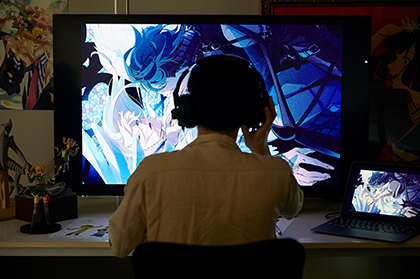
Students will learn character production techniques adapted to various media such as anime, games, manga, figures, goods, and advertisements. After acquiring the basic analog and digital drawing skills, students will deepen their studies by dividing their focus into different directions of expression, such as character illustrations, animation/video, game graphics, and manga.
CLOSE
- TOURISM DESIGNVIEW MORE
-
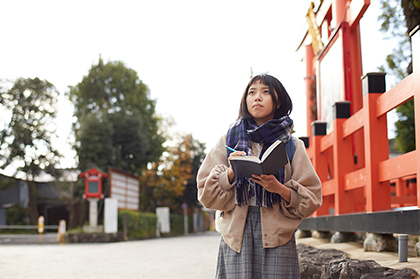
Set in Kyoto, one of the world's leading tourist destinations, students will learn designs that convey the appeal of "sightseeing" resources. While learning basic design skills, students will develop on-site coverage and problem-finding skills through fieldwork, and acquire the ability to work as a team through group work. This is a course to acquire not only formative designing abilities but also the practical designing abilities required by society such as planning ability and production ability.
CLOSE
- LIVING PRODUCTVIEW MORE
-
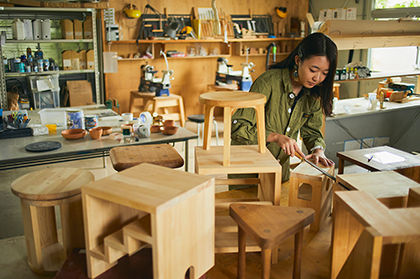
Using stationery, miscellaneous goods, furniture, etc. as the theme, we will think about ways to give shape to ideas of "I wish something like this existed!" In addition to learning about the characteristics and processing methods of materials such as wood and resin, and production techniques using CAD and 3D printers, students will also learn about package design and brand design that make the created works more appealing. Let's acquire the ability to build relationships between people and things, and people and people, while refining the ability to plan and develop products.
CLOSE
- TEXTILE DESIGNVIEW MORE
-
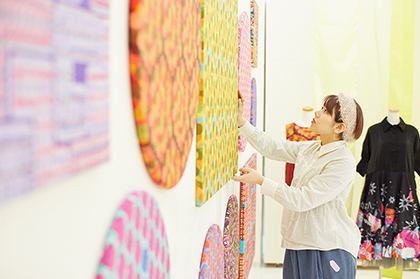
We will learn a wide range of techniques from traditional techniques such as wax dyeing to modern techniques such as digital printing and computer-controlled weaving, and combine various related techniques such as plane drawing and sewing in the production of works. Let's explore the possibilities of "dyeing and weaving/textiles" that are closely related to kimono, fashion, art and interiors in Kyoto and deliver them to the world.
CLOSE
- GRADUATE SCHOOLVIEW MORE
-
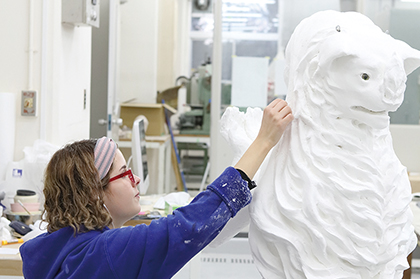
In the two-year master's degree program, students choose from a variety of fields in formative arts and design, and focus on the areas they wish to study in depth. Students will independently set research themes, make plans, and deepen each research project under the guidance of their academic advisors. We also accept mature students and international students from various countries; students with various backgrounds and experiences can stimulate each other in leading a fulfilling research life.
CLOSE
- JAPANESE PAINTINGVIEW MORE
-
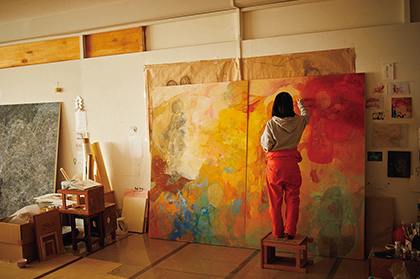
In the area of Japanese painting, we use rare painting materials that are now only available in Japan. We will explore the possibilities of new expressions hidden in the combination of traditional materials and the senses of those living in this day and age. Find your own Japanese painting style in Arashiyama, Kyoto, where newness and tradition coexist.
CLOSE
- OIL PAINTING & CONTEMPORARY ARTVIEW MORE
-
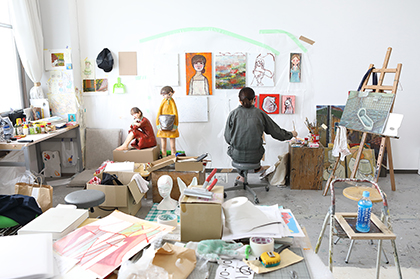
Finding the expression you seek, realizing it, and conveying it to others. This is the place to lay the foundation necessary for that. Students can freely choose from painting expressions such as dessins, drawings, oil paintings, and acrylics to photographs, videos, 3D objects, and advanced expressions using computers. We aim to produce works full of creative individuality by freely exploring what each person wants to express.
CLOSE
- GRAPHIC DESIGNVIEW MORE
-
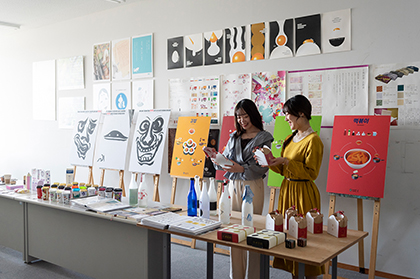
To accurately convey the "information we want to convey," propose the "aspirations of the times," and support a "rich product culture" through various designs such as posters, flyers, magazines, packages, etc. This is the goal of graphic design. We will also focus on "universal design" and not only be aware of trends, but also research designs that are truly necessary.
CLOSE
- ILLUSTRATIONVIEW MORE
-
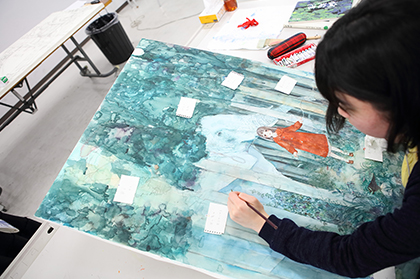
There are many places where illustrations can be used, such as advertisements, posters, illustrations, characters, and picture books. What is important in illustration is not only drawing skills, but also collecting materials, observing things, and presenting the work. We provide guidance based on the vision of what students wish to do after graduation, such as commercial illustration, creative illustration, and picture book authorship. In the second year, students select one of two study genres, "Illustration" or "Picture Books."
CLOSE
- ANIMATIONVIEW MORE
-
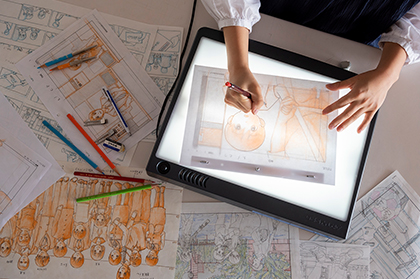
Animation is basically "moving illustration." In addition to learning the basics of drawing, students will learn the basics of movement and the creation of materials. Then, students will acquire the ability to freely express the envisioned image while creating actual animated works using analog drawings and digital equipment.
CLOSE
- DESIGN FOR DAILY GOODSVIEW MORE
-
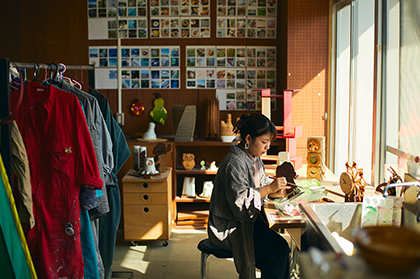
The important thing when designing is to create something that is useful to people. The designer needs to have the ability to think about the feelings of the user, not just their own values. In the area of design for daily goods, students learn the processing techniques of various materials such as wood, metal, glass, cloth, and clay, and design goods rooted in people's lives such as miscellaneous goods, furniture, and tableware to improve their practical skills.
CLOSE
- MANNGAVIEW MORE
-
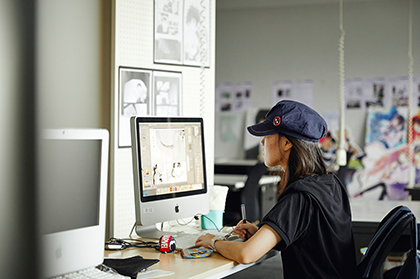
Manga is created not only by the expressive skills involved in drawing pictures, but also by the creativity of stories, composition of the screens, and the ability to write. Our major goal is not only to cultivate professional manga artists, but also to develop artists who make use of manga expressions. Acquire various knowledge and culture, maintain a broad perspective, and grow into person who supports Japan’s world-renowned manga culture.
CLOSE
- COMIC ARTVIEW MORE
-
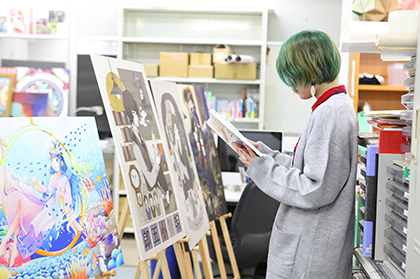
Comic art was born in Japan as a new visual art influenced by manga and animation but not bound by their limitations, and its usage is expanding year by year. One of the major features of the program is that students can learn the basics such as drawing, digital expression, and analog expression in a well-balanced manner, and while doing so can receive guidance from artists who are active on the front lines. Students can imagine their own direction from observing the activities of their teachers and learn how work is done.
CLOSE
- POSTGRADUATE PROGRAMVIEW MORE
-
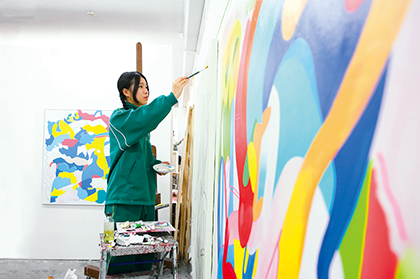
The postgraduate program (two years) allows students to pursue the skills and expressiveness that they have acquired over two years in a deeper and broader way. There is an art major and a design major (including manga and comic art). Students will also learn about the relationship between art and society through participation in art events and public exhibitions. It is also possible to obtain a degree equivalent to that of a four-year university, thereby opening the way to graduate school.
CLOSE
Main Campus
1 Gotoh-cho, Saga, Ukyo-ku, Kyoto 616-8362
Fushihara Campus
8 Fushihara-cho, Saga, Ukyo-ku, Kyoto 616-8334

